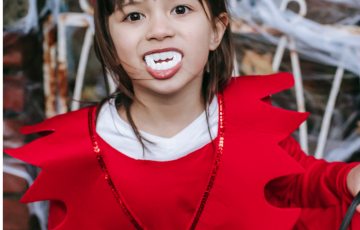There are many ways you can keep your toddler safe from physical harm. This section has information and community resources to help you ensure car seat safety, a safe home, and safe play for your toddler.
- always use a certified and properly secured car seat when transporting your child by car
- as your toddler develops new motor skills, you will need to upgrade your baby-proofed home to a toddler-proof home
- a safe home includes a smoke-free environment for your toddler
- despite our best efforts to keep our children safe, accidents do happen - take a first aid class to prepare yourself
Car Seats
A car seat can save your child’s life. Make sure you have a certified, properly installed car seat made after 1997. Older or second-hand seats may not meet safety standards and may not protect your child in an accident.
As your toddler grows, you will need to change the type of car seat she uses. The Canada Safety Council recommends:
- Rear-facing Infant Seat: Birth to 10 kg (22 lb.)
- Forward-facing Child Seat: 10 to 18 kg (22 - 40 lb.)
- Booster Seat: 18 kg (40 lb.) or over
Resources:
Car Seat Safety Basics - Canada Safety Council
Child Car Safety - Transport Canada
Choosing a child car seat or booster seat - ICBC
DID YOU KNOW?
- four out of five children are not properly buckled up when they ride in vehicles
- car accidents are the number one cause of death for children between one and nine years old
- about 75% of deaths and serious injuries that happen in car accidents would have been prevented by the correct use of a child restraint on every car trip
Safe Home
Now that your child is a toddler, you will need to re-evaluate the baby-proofing cautions you’ve taken to make your home safe. Get down on your hands and knees and explore your home with an eye for all the places a curious toddler could find trouble.
- ensure your baby’s crib, car seat, stroller and all other equipment meet safety standards
- store all household cleaners, medications, cosmetics, vitamins, and other poisons in secured cabinets out of reach of your baby
- install safety gates on stairs
- prevent choking by keeping small objects away from your child
- restrict choking hazard foods like nuts and hot dogs and ensure pacifiers meet safety standards
- never leave your toddler unattended in the bath
- ensure toys are age-appropriate and have no small pieces that can be removed or broken off
- the lead in old paint and PVC mini-blinds can cause harm to your baby - repaint and remove blinds from your home
- make sure safety locks are installed on your windows
- lower the temperature of your hot water heater to reduce the danger of scalding
- keep your home smoke-free
- children exposed to cigarette smoke are at higher risk of Sudden Infant Death Syndrome and diseases and illnesses such as asthma
- accidents happen - take a child first aid class
Safe Play
Toddlers need lots of space outdoors to run and jump and climb, and a place indoors to play games and explore. You can protect your child from injury by making her play environments as safe as possible.
- give your child play activities she can handle - large playgrounds may look fun but toddlers will have difficulty playing safely on oversized ladders, slides and stairs
- make sure backyard pools, streams and ponds are not accessible to small children
- toddlers should always wear helmets when riding in bike trailers or carrier seats
- make sure your children’s toys are age-appropriate and that both toys and clothes are safe and approved by the Canadian Standards Association (CSA)
- keep caution reasonable
- your child needs a wide variety of physical activities to develop the motor skills, balance, strength, and agility that will help keep their own body safe as they grow and try new things
- protect your preschooler from the sun’s damaging UV rays by using protective clothing like hats and sunsuits, applying sunscreen and limiting exposure
Resources:
Playground Safety – Caring for Kids
Water Safety – Caring for Kids
Sun Safety – Caring for Kids



